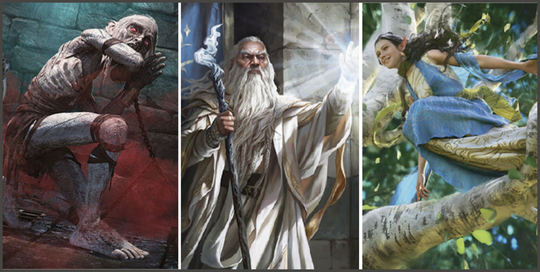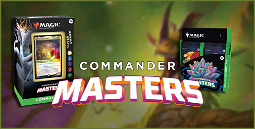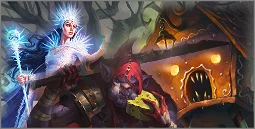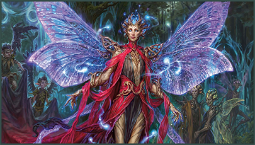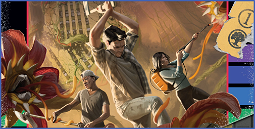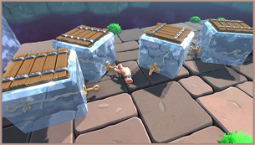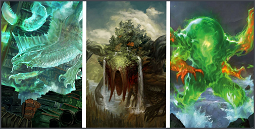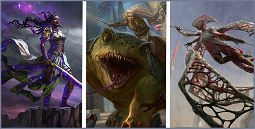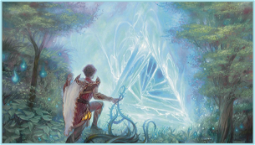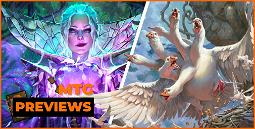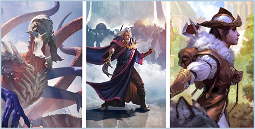Magic: The Gathering's Lord of the Rings: Tales of Middle-earth
The Lord of the Rings draft format was a resounding success. Bringing the essence of Tolkien’s works into the world of Magic: The Gathering, the set’s draft set the foundation for what would become a cornerstone for future Limited sets. From concept to execution, the set’s design has lessons for future sets of all sizes.
With hindsight, the archetypes of LTR look more obvious than they did at the time. Blue/Green scry and Green/White Food looked like promising decks, but they were overshadowed by the Grixis-spectrum decks that simply splashed the powerful red cards. Frail creatures in synergy decks struggled against common removal spells, while Landcycling cards like Oliphaunt and Eagles of the North became playable and found micro-synergies.
The themes are now more obvious, but it’s easy to look back and think that they were always there. The joke “reading the card explains the card” lost its relevance as understanding card mechanics became more intricate. I’ve picked out a few of the most important lessons from the format that still hold true in the current draft environment.
The best card in LTR was Birthday Escape. It’s a simple concept, being a two-mana cantrip that draws two cards; this is a powerful effect that every blue deck wants. Looking at Escape’s stats, though, reveals why it’s the best blue common card in the format. At two mana, the card has three total mana symbols, providing valuable card advantage at a low cost.
The card was particularly strong in LTR because it was so easy to play two or three spells in a turn. First, the Ring’s second level offered consistent looting, helping you avoid flooding (otherwise known as drawing too many lands) and allowing you to cast multiple spells in a turn. If you didn’t have the Ring but still wanted to draw cards, cards like The Black Breath and Cast into the Fire became more playable simply because you had more accessible looting to avoid flooding.
Fog on the Barrow-Downs was a weak card in LTR. The aura-based removal like Fog was much less powerful in LTR because of the synergy with the Ring’s second level. When you were able to loot on turn two, you could often get rid of your opponent’s costly cards like The Black Breath. If you couldn’t, then you would be unlikely to be able to afford to pay for the enchantment on turn three.
Nasty End and Slip on the Ring were better answers to utility creatures. For example, Nasty End could kill an Eagle of the North or Oliphaunt, whereas Fog on the Barrow-Downs didn’t. In terms of gameplay, Slip on the Ring was a great answer to the popular Oath of Service, which would win games if not answered.
Understanding card mechanics became more complex. When I first started playing the game, card mechanics were relatively simple. Flying meant a creature could only be blocked by other flyers or reach, first strike allowed a player to deal damage before their opponent could assign blockers, and unblockable meant they couldn’t be blocked.
The introduction of dungeons, initiative, and unconventional mechanics changed the landscape of the game. Suddenly, mechanics like reach and vigilance meant a lot more, and it was possible to wield cards like The Balrog’s Molten Whip to great effect. While these effects are now more straightforward, they are often important to know; for example, a 4/4 with no abilities that would be a great mana sink in previous sets is likely unplayable in LTR because it’s a Hill Troll.
The format had a diverse collection of competitive archetypes. With the introduction of dungeons, the format saw a number of interesting archetypes that were fun to play and competitive. In my experience, green was the weakest color in the format, but Blue/Green scry, Blue/Green/White scry, and Grixis were all competitive archetypes.
The weakness of green was partly due to the strength of black. Black had access to the best removal in the format, as well as powerful creatures and card advantage. In contrast, green lagged behind, with its best cards being inferior versions of black cards. Green also struggled with its creatures being weak without synergy and its lack of removal spells.
The format had a diverse collection of competitive archetypes. From the aforementioned Blue/Green decks to the popular Grixis Control, the format was filled with archetypes that were fun to play and competitive. This was helped by the introduction of dungeons and the change in the rules around blocking. Dungeons meant that it was not always correct to attack with your entire board, and the change in rules around blocking (it was now only mandatory when your opponent had a creature with lethal damage) meant that players had to be more cautious with committing their creatures.
Certain creatures with square stats like 4-mana 4/4s weren’t worth playing. For example, Hill Troll, Lan, and Atanamir were playable but unspectacular without synergy. Other creatures with abilities like Deep-water Serpent, Ungoliant’s Spawn, and Oath of Service were strong enough to play in monocolored decks even if they weren’t the strongest stats.
The format had great macro-archetypes and micro-synergies. A lot of the archetypes in the format were macro archetypes like Blue/Green scry and Grixis Control, but other archetypes were filled with synergy. The dungeons meant that it was important to draft a mix of gold, colorless, and color cards.
